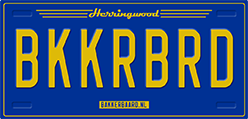I thought I was pretty up to date on the whole doing-a-book-thing, so I was pretty confident going forward with the cover job. I dabble in graphics myself, so I was as complete as possible in providing information for the artist to work with. Confident that I had done my part, I closed my laptop and treated myself to some episodes of Cracked After Hours, which I recently found out aren’t meant for me. Well, I’m watching anyway, Dan.
Shortly thereafter, all my confidence was smote to the ground by a crushing godhand that had taken the form of two simple questions.
How many pages is your book (which determines the size of the spine)?
Do you have a blurb?
There was also the request for the text of my author bio, but I shot that down like Indy in Raiders Of The Lost Ark. What use is it for anyone to know that I’m some joker who started writing because there weren’t any good new games out at the time?
And the blurb? Well, that shit merits its own post because damn. I can tell you exactly what happens in the book, but I have no idea how to boil that down to 150 words, preferably without spoiling the whole thing.
So. For this post, that leaves the page count… The goddamn page count.
Really, through my life I’ve found myself in some situations that merited cold sweats and terror-shits. I particularly remember hiding under a shed because a bully was looking for me and seeing his shoes closing in on my hiding spot.
None of that measured up to trying to find out how many pages my book was going to be. The artist was waiting for an answer and I had nothing. Nothing!
For those of you wondering: The pages in your word processor do not equal those in the final book. For an accurate page count, the book needs to have been typeset, which means every edit that precedes it needs to have been done.
I tried improvising by using a calculation I found on Google, but because the results seemed questionable, I tried a quick typeset using Kindle Create. That gave me a more realistic number, but entirely different from what I had initially calculated. Long story short, every try netted me different results.
There was no other option left. I had to swallow my pride. I had to fess up to the artist that I did not know this.
Sorry, I am not the professional I pretended to be, my story isn’t even typeset and I don’t know what to tell you.
I then quickly went to find a proofreader and hoped they could get the job done quick enough for me to typeset the book (and learn how to typeset, mind you) before the ebook cover was done so the artist could seamlessly move on to the print cover.
Thankfully, the artist was a woman of many trades. Typesetting was one of the tricks in her bag and it was no problem for her to insert the job between the ebook cover and the print cover.
Awesome. Now we’re all waiting for the proofreader to finish dotting the i’s and crossing the t’s. Not a big problem. Gives me time to work on this here website, because the easy build-it-yourself template package is definitely overselling the easy part.

[…] These aren’t mistakes the printer made. Overall, the book looks really good, and it could pass for a professional job. The mistakes are in the text. I had to rush to get a proofread done because the artist was waiting for information to do the print cover. I’ve detailed this glorious saga in an earlier post. […]